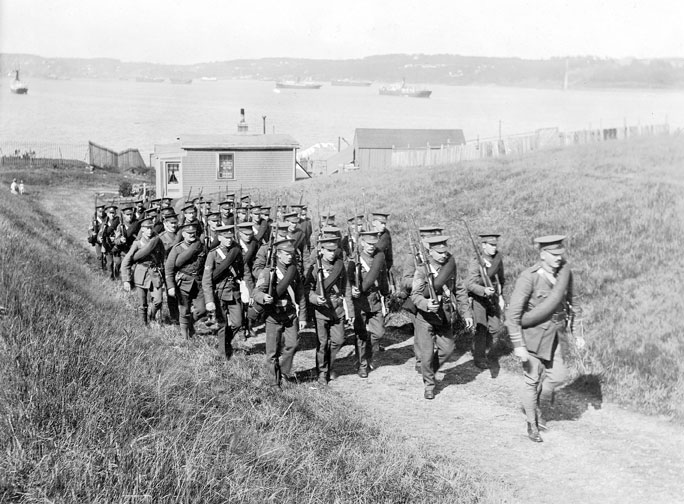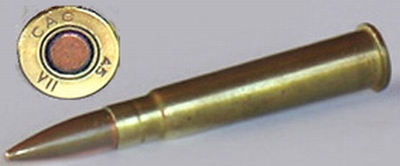|
Pacific Command Water Transport Company, R.C.A.S.C.
The Pacific Command Water Transport Company, RCASC, was a secret freight-patrol shipping unit of the Canadian Army based at Vancouver, British Columbia, during the Second World War. The unit fell under the jurisdiction of Pacific Command, the Canadian Army formation responsible for defending the Pacific Coast of Canada against Japanese attack. History Based at the Old Vancouver Hotel and the RCASC wharf (Vancouver) under the command of Major C.G. Matthews, the Pacific Command Water Transport Company of the Royal Canadian Army Service Corps was formed in 1942, utilizing fishing packers and seiners leased from local civilians for army use. The company was tasked with resupplying camps established to build a telephone line from British Columbia to Dutch Harbor, Alaska, after the Aleutian Islands Attu and Kiska were occupied by Japanese Imperial Forces. Upon completion of the communication link, the Water Transport Company was assigned with resupplying freight and personnel to remo ... [...More Info...] [...Related Items...] OR: [Wikipedia] [Google] [Baidu] |
Royal Canadian Army Service Corps
The Royal Canadian Army Service Corps (RCASC) was an administrative and transport corps of the Canadian Army. The Canadian Army Service Corps was established in the Non-Permanent Active Militia in 1901 and in the Permanent Active Militia in 1903. The Canadian Permanent Army Service Corps was redesignated The Royal Canadian Army Service Corps on 3 Nov 1919. History The RCASC was established by General Order No. 141, as the Canadian Army Service Corps (CASC), on November 1, 1901. The CASC was modelled directly off the British Army Service Corps to provide all transportation and supply services to the Army. Initially, the CASC consisted of four companies to support the Active Militia units (No. 1 at London, No. 2 at Toronto, No. 3 at Kingston and No. 4 at Montreal). The Permanent Component of the CASC was created under General Order 21 of December 1903 and the corps grew quickly, doubling the number of units by 1903, and growing by another three companies by 1905. By the summer of ... [...More Info...] [...Related Items...] OR: [Wikipedia] [Google] [Baidu] |
Coal Harbour
Coal Harbour is the name for a section of Burrard Inlet lying between Vancouver's Downtown Peninsula and the Brockton Point of Stanley Park. It has also now become the name of the neighbourhood adjacent to its southern shoreline. Neighbourhood Coal Harbour is used to designate the relatively new official neighbourhood of the City of Vancouver bounded by roughly Burrard Street and Pender near the Financial District to West Georgia Street near the West End in the south to Stanley Park in the north. The neighbourhood consists of numerous high-rise residential apartment and condominium towers with luxury townhome podiums. Features The northwestern section near Stanley Park features picturesque parkland, private marinas, several rowing and boating clubs, high-end shops and restaurants, and a community centre designed by architect Gregory Henriquez. To the east is Deadman's Island, the site of the naval station and museum , where the harbour itself opens up to the Burrar ... [...More Info...] [...Related Items...] OR: [Wikipedia] [Google] [Baidu] |
Military Logistics Units And Formations Of Canada
A military, also known collectively as armed forces, is a heavily armed, highly organized force primarily intended for warfare. It is typically authorized and maintained by a sovereign state, with its members identifiable by their distinct military uniform. It may consist of one or more military branches such as an army, navy, air force, space force, marines, or coast guard. The main task of the military is usually defined as defence of the state and its interests against external armed threats. In broad usage, the terms ''armed forces'' and ''military'' are often treated as synonymous, although in technical usage a distinction is sometimes made in which a country's armed forces may include both its military and other paramilitary forces. There are various forms of irregular military forces, not belonging to a recognized state; though they share many attributes with regular military forces, they are less often referred to as simply ''military''. A nation's mili ... [...More Info...] [...Related Items...] OR: [Wikipedia] [Google] [Baidu] |
Military Units And Formations Of Canada In World War II
A military, also known collectively as armed forces, is a heavily armed, highly organized force primarily intended for warfare. It is typically authorized and maintained by a sovereign state, with its members identifiable by their distinct military uniform. It may consist of one or more military branches such as an army, navy, air force, space force, marines, or coast guard. The main task of the military is usually defined as defence of the state and its interests against external armed threats. In broad usage, the terms ''armed forces'' and ''military'' are often treated as synonymous, although in technical usage a distinction is sometimes made in which a country's armed forces may include both its military and other paramilitary forces. There are various forms of irregular military forces, not belonging to a recognized state; though they share many attributes with regular military forces, they are less often referred to as simply ''military''. A nation's military may ... [...More Info...] [...Related Items...] OR: [Wikipedia] [Google] [Baidu] |
Royal Canadian Artillery
, colors = The guns of the RCA themselves , colors_label = Colours , march = * Slow march: "Royal Artillery Slow March" * Quick march (dismounted parades): "British Grenadiers/ The Voice of the Guns" * Trot past: "Keel Row" * Gallop past (horse artillery only): "Bonnie Dundee" , mascot = , anniversaries = * 1855: Militia Act of 1855 passed by the Parliament of the Province of Canada and creation the first truly Canadian army units * 27 November 1856: first Canadian Artillery unit formed (''Battalion of Montreal Artillery'') * 10 August 1883: ''Regiment of Canadian Artillery'' of the Permanent Active Militia authorized to be formed , equipment = * 105 mm Howitzer, C3 * 105 mm Howitzer, LG1 Mk II * 155 mm Howitzer M777C1 , equipment_label = Current weapon systems , battle_honours = The word la, Ubique, lit=Everywhere, take ... [...More Info...] [...Related Items...] OR: [Wikipedia] [Google] [Baidu] |
Lee–Enfield
The Lee–Enfield or Enfield is a bolt-action, magazine-fed repeating rifle that served as the main firearm of the military forces of the British Empire and Commonwealth during the first half of the 20th century, and was the British Army's standard rifle from its official adoption in 1895 until 1957. The WWI versions are often referred to as the "SMLE", which is short for the common "Short, Magazine, Lee–Enfield" variant. A redesign of the Lee–Metford (adopted by the British Army in 1888), the Lee–Enfield superseded the earlier Martini–Henry, Martini–Enfield, and Lee-Metford rifles. It featured a ten-round box magazine which was loaded with the .303 British cartridge manually from the top, either one round at a time or by means of five-round chargers. The Lee–Enfield was the standard issue weapon to rifle companies of the British Army, colonial armies (such as India and parts of Africa), and other Commonwealth nations in both the First and Second World Wars ( ... [...More Info...] [...Related Items...] OR: [Wikipedia] [Google] [Baidu] |
Prince Rupert, British Columbia
Prince Rupert is a port city in the province of British Columbia, Canada. Its location is on Kaien Island near the Alaskan panhandle. It is the land, air, and water transportation hub of British Columbia's North Coast, and has a population of 12,220 people as of 2016. History Coast Tsimshian occupation of the Prince Rupert Harbour area spans at least 5,000 years. About 1500 B.C. there was a significant population increase, associated with larger villages and house construction. The early 1830s saw a loss of Coast Tsimshian influence in the Prince Rupert Harbour area. Founding Prince Rupert replaced Port Simpson as the choice for the Grand Trunk Pacific Railway (GTP) western terminus. It also replaced Port Essington, away on the southern bank of the Skeena River, as the business centre for the North Coast . The GTP purchased the 14,000-acre First Nations reserve, and received a 10,000-acre grant from the BC government. A post office was established on November 23, 1906. ... [...More Info...] [...Related Items...] OR: [Wikipedia] [Google] [Baidu] |
Port Alberni
Port Alberni () is a city located on Vancouver Island in the province of British Columbia, Canada. The city lies within the Alberni Valley at the head of the Alberni Inlet, Vancouver Island's longest inlet. It is the location of the head offices of the Alberni-Clayoquot Regional District. Port Alberni currently has a total population of 18,259. Port Alberni is served by the coast-spanning Island Highway system, the Island Rail Corridor, and a local airport. History Port Alberni was named for Captain Pedro de Alberní y Teixidor, Don Pedro de Alberní, a Spain, Spanish officer, who commanded Fort San Miguel at Nootka Sound on Vancouver Island's west coast from 1790 to 1792. Port Alberni and the West Coast of Vancouver Island is the traditional territory of the Tseshaht First Nation, Tseshaht and Hupacasath First Nation, Hupacasath First Nations of the Nuu-chah-nulth people, Nuu-Chah-Nulth Tribal Council. The Nuu-chah-nulth were previously called the Nootka. Many place names in ... [...More Info...] [...Related Items...] OR: [Wikipedia] [Google] [Baidu] |
Royal Canadian Air Force
The Royal Canadian Air Force (RCAF; french: Aviation royale canadienne, ARC) is the air and space force of Canada. Its role is to "provide the Canadian Forces with relevant, responsive and effective airpower". The RCAF is one of three environmental commands within the unified Canadian Armed Forces. As of 2020, the Royal Canadian Air Force consists of 12,074 Regular Force and 1,969 Primary Reserve personnel, supported by 1,518 civilians, and operates 258 manned aircraft and nine unmanned aerial vehicles. Lieutenant-General Eric Kenny is the current commander of the Royal Canadian Air Force and chief of the Air Force Staff. The Royal Canadian Air Force is responsible for all aircraft operations of the Canadian Forces, enforcing the security of Canada's airspace and providing aircraft to support the missions of the Royal Canadian Navy and the Canadian Army. The RCAF is a partner with the United States Air Force in protecting continental airspace under the North American ... [...More Info...] [...Related Items...] OR: [Wikipedia] [Google] [Baidu] |
Canadian Army
The Canadian Army (french: Armée canadienne) is the command (military formation), command responsible for the operational readiness of the conventional ground forces of the Canadian Armed Forces. It maintains regular forces units at bases across Canada, and is also responsible for the Army Reserve, the largest component of the Primary Reserve. The Army is headed by the concurrently held Commander of the Canadian Army and Chief of the Army Staff, who is subordinate to the Chief of the Defence Staff (Canada), Chief of the Defence Staff. The Army is also supported by 3,000 civilian employees from the civil service. Formed in 1855, as the Canadian Militia#Active militias, Active Militia, in response to the threat of the United States to the Province of Canada after the British Garrison left for the Crimean War. This Militia was later split into the Permanent Active Militia and the Non-Permanent Active Militia. Finally, in 1940, an Order in Council was issued to rename the active m ... [...More Info...] [...Related Items...] OR: [Wikipedia] [Google] [Baidu] |




